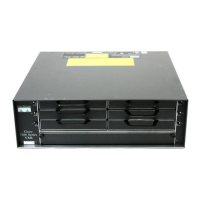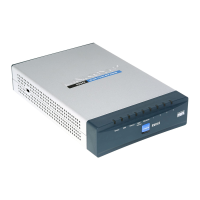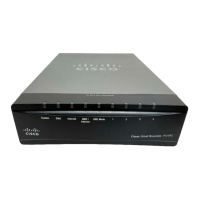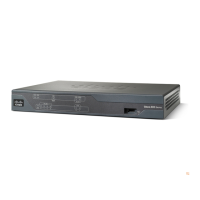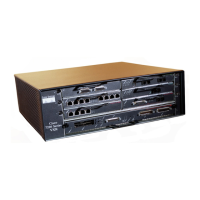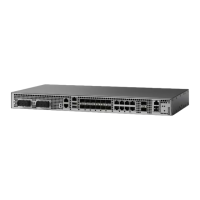Why is my Cisco vEdge showing a fan alarm?
- Aanna51Jul 28, 2025
If you receive a fan alarm on your Cisco Network Router, the system triggers an alarm because the fan has either stopped running or is running below a predefined RPM threshold.

Why is my Cisco vEdge showing a fan alarm?
If you receive a fan alarm on your Cisco Network Router, the system triggers an alarm because the fan has either stopped running or is running below a predefined RPM threshold.
Why is my Cisco vEdge showing a main board temperature alarm?
If your Cisco Network Router shows a main board temperature alarm, it signifies that the main board has a temperature sensing point that has crossed the predefined threshold level, triggering an alarm.
What to do if minor alarm is active on my Cisco vEdge?
A yellow alarm condition on your Cisco Network Router requires further monitoring and/or maintenance.
| Connectivity Technology | Wired |
|---|---|
| Virtualization Support | Yes |
| High Availability | Yes |
| QoS Support | Yes |
| Product Type | Router |
| Data Link Protocol | Ethernet |
| Routing Protocols | BGP, OSPF |
| Interfaces | Gigabit Ethernet |
| Operating System | Cisco vEdge OS |
| Security | IPSec |
| Management | CLI |
States compliance with export regulations and controlled technologies for the vEdge 100.
Lists chassis specifications, power, physical, and packaging details for the vEdge 100.
Describes physical components on the front and rear panels, including LEDs and their status.
Details the RJ-45 Ethernet, USB, and console ports, including pinouts and specifications.
Explains the AC power supply unit, power cord, and cooling system for the vEdge 100.
Provides essential safety guidelines for installation and handling of equipment.
Outlines site requirements, environmental conditions, and rack mounting guidelines.
Provides step-by-step instructions for unpacking and mounting the router.
Details connecting the router to AC power, LAN/WAN, and a management console.
Shows the default configuration file content for the vEdge 100 router.
Covers monitoring LEDs, system alarms, and troubleshooting common issues.
Explains how to revert to factory default configuration and perform router resets.
Describes procedures for locating serial numbers and returning hardware for repair.
States compliance with export regulations and controlled technologies for the vEdge 100b.
Lists chassis specifications, power, physical, and packaging details for the vEdge 100b.
Describes physical components on the front and rear panels, including LEDs and their status.
Details RJ-45 Ethernet, USB, and console ports with their specifications.
Explains the external AC-DC power adapter and its specifications.
Provides general safety standards for installation and environmental requirements.
Outlines site preparation, environmental conditions, and rack mounting guidelines.
Provides step-by-step instructions for unpacking and mounting the router.
Details connecting the router to AC power, LAN/WAN, and a management console.
Shows the default configuration file content for the vEdge 100b router.
Covers monitoring LEDs, system alarms, and troubleshooting common issues.
Explains how to revert to factory default configuration and perform router resets.
Describes procedures for locating serial numbers and returning hardware for repair.
Provides a brief overview of the vEdge 100m router features and components.
States compliance with export regulations and controlled technologies for the vEdge 100m.
Lists chassis, wireless platform, and antenna specifications for the vEdge 100m.
Describes physical components on the front and rear panels, including LEDs and their status.
Details RJ-45 Ethernet, USB, and console ports.
Explains the AC power supply and cooling system of the router.
Provides safety standards and environmental requirements for installation.
Outlines site preparation, environmental conditions, and rack mounting guidelines.
Provides step-by-step instructions for unpacking and installing the router.
Details connecting the router to AC power, LAN/WAN, and a management console.
Shows the default configuration file content.
Covers monitoring LEDs, system alarms, and troubleshooting.
Explains how to revert to factory default and perform resets.
Describes procedures for returning hardware for repair.
States compliance with export regulations and controlled technologies for the vEdge 100wm.
Lists chassis, wireless platform, and antenna specifications for the vEdge 100wm.
Describes physical components on the front and rear panels, including LEDs and their status.
Details RJ-45 Ethernet, USB, and console ports.
Explains the AC power supply and cooling system of the router.
Outlines site preparation, environmental conditions, and rack mounting guidelines.
Provides step-by-step instructions for unpacking and installing the router.
Details connecting the router to AC power, LAN/WAN, and a management console.
Covers monitoring LEDs, system alarms, and troubleshooting.
Explains how to revert to factory default and perform resets.
Describes procedures for returning hardware for repair.
States compliance with export regulations and controlled technologies for the vEdge 1000.
Lists chassis specifications, slot density, power, and physical details for the vEdge 1000.
Describes front panel components, including LEDs, reset button, and SD card slot.
Lists copper and fiber transceivers tested for use with vEdge 1000 and 2000 routers.
Details network ports (SFP), management, and console ports with pinouts and LEDs.
Explains AC power supply adapters, cooling system, and airflow for the vEdge 1000.
Provides instructions for unpacking and mounting the router in a rack.
Details connecting to system ground, AC power, management console, and network.
Shows the default configuration file content for the vEdge 1000 router.
Covers monitoring LEDs, system alarms, and troubleshooting.
Provides steps for installing SFP and SFP+ transceivers.
Provides steps for removing SFP and SFP+ transceivers.
Explains how to revert to factory default and perform resets.
Describes procedures for returning hardware for repair.
States compliance with export regulations and controlled technologies for the vEdge 2000.
Lists chassis specifications, slot density, power, and physical details for the vEdge 2000.
Describes front panel components, including LEDs, reset button, and SD card slot.
Details Pluggable Interface Modules (PIMs), SFP/SFP+ transceivers, and their configurations.
Details network ports, management, and console ports with pinouts and LEDs.
Explains AC power supplies, cooling system, and airflow for the vEdge 2000.
Provides safety standards, environmental requirements, and rack mounting guidelines.
Outlines site preparation, environmental conditions, and rack requirements.
Provides instructions for unpacking and mounting the router in a rack.
Details connecting to system ground, AC power, management console, and network.
Shows the default configuration file content for the vEdge 2000 router.
Covers monitoring LEDs, system alarms, and troubleshooting.
Provides procedures for removing power supplies, fan trays, PIMs, and transceivers.
Explains how to revert to factory default and perform resets.
Describes procedures for returning hardware for repair.
States compliance with export regulations and controlled technologies for the vEdge 5000.
Lists chassis specifications, slot density, power, and physical details for the vEdge 5000.
Describes front and rear panel components, including LEDs, reset button, and LCD panel.
Details Network Interface Modules (NIMs) and supported SFP/SFP+ transceivers.
Details network ports, management, and console ports with pinouts and LEDs.
Explains AC power supplies, cooling system, and airflow for the vEdge 5000.
Provides safety standards, environmental requirements, and rack mounting guidelines.
Outlines site preparation, environmental conditions, and rack requirements.
Details connecting to system ground, AC power, management console, and network.
Shows the default configuration file content for the vEdge 5000 router.
Covers monitoring LEDs, system alarms, and troubleshooting.
Provides procedures for removing power supplies, fan trays, NIMs, and transceivers.
Explains how to revert to factory default and perform resets.
Describes procedures for returning hardware for repair.
Provides initial steps for setting up and configuring the vEdge Cloud router VM.
Displays the default configuration file content for the vEdge Cloud router.



